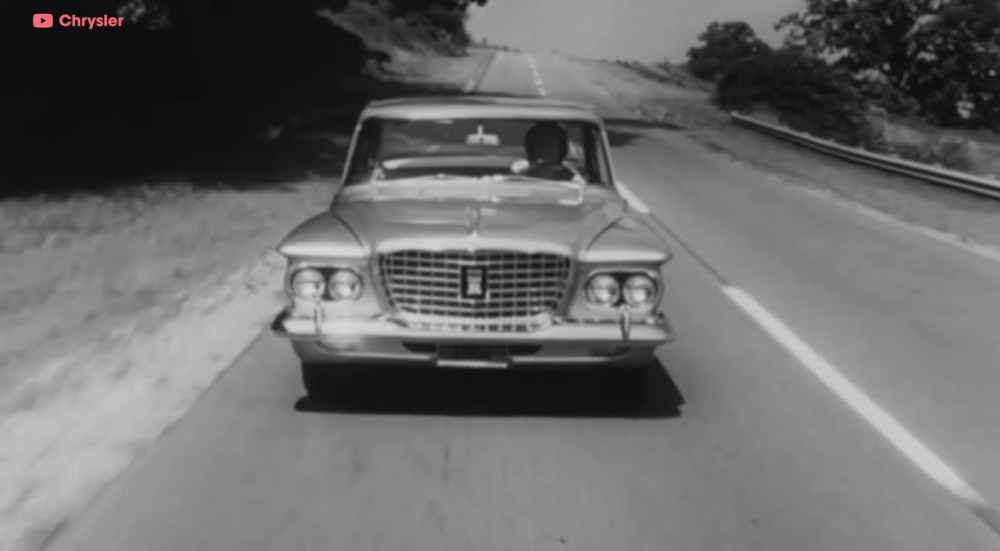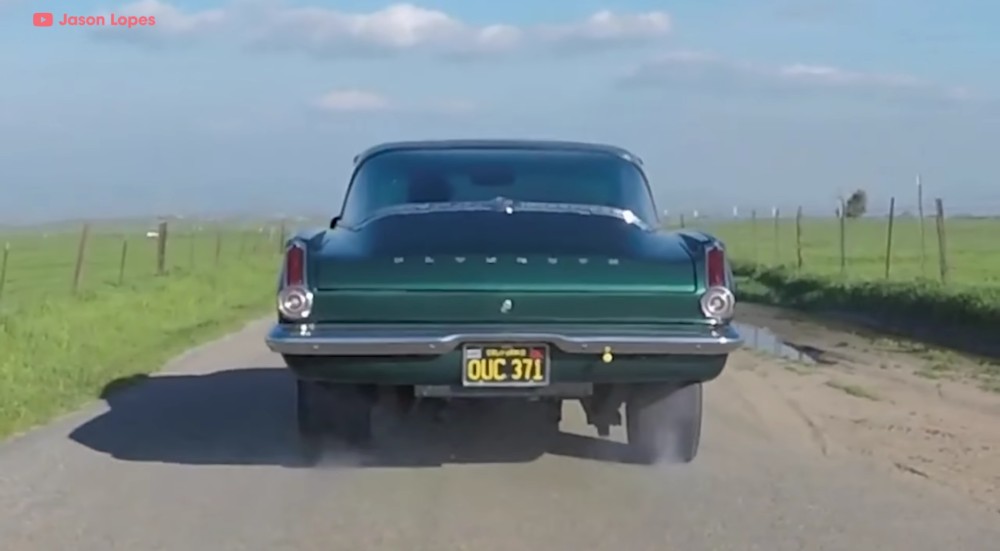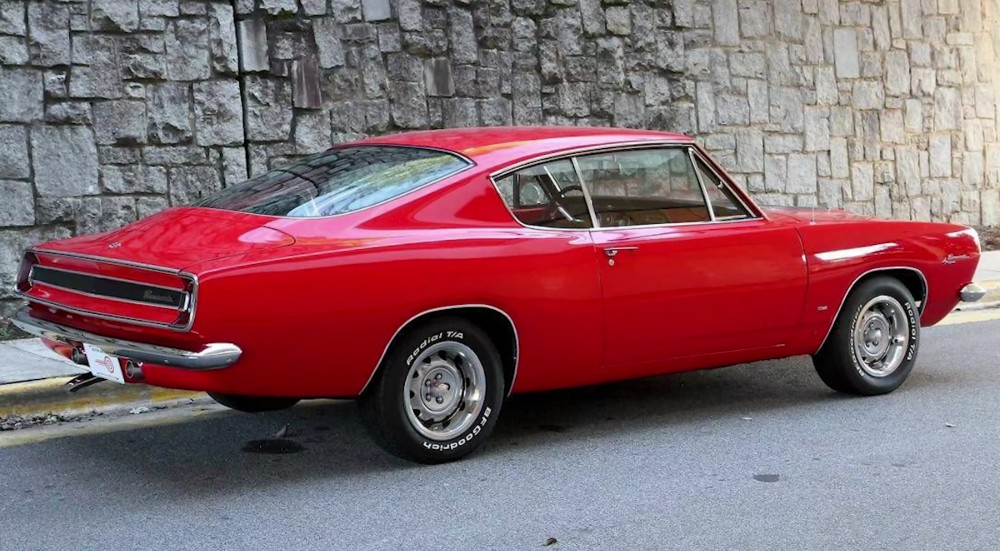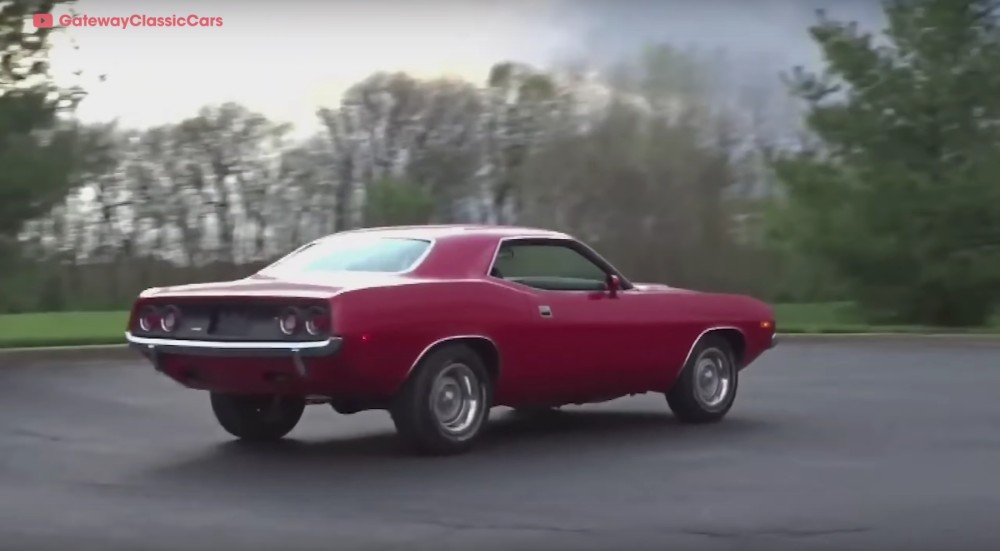Donut Media Gets You ‘Up to Speed’ on the Iconic Barracuda
From its beginnings as a sporty economy car, to its peak as a muscle machine, the Barracuda was Plymouth’s finest moment.
We all know that Dodge has put out some pretty baller cars over the decades, including the Charger, and the Challenger. While those nameplates live on today as the righteous machines they are, there’s another nameplate from Mopar history we cannot ever forget: the Plymouth Barracuda.
Though the brand died shortly into the new millennium, the Barracuda name lives on in our hearts. But what was this machine, and how did it make such an impression? Donut Media’s James Pumphrey gets us all ‘up to speed’ on the original pony car.

“In the late 1950s, American car manufacturers were getting a little bit sweaty,” said Pumphrey. “Compact cars from places like Europe… were quickly encroaching on the American car market. Chrysler president — and guy with the coolest name ever — Lester Lum ‘Tex’ Colbert saw cars like the Fiat 500, Volkswagen Beetle, and Renault Dauphine eating up profit shares like a Frenchman going to town on a duck sandwich.”
Colbert pushed his company to build competitors to fight the European imports. Plymouth’s first salvo was the 1960 Valiant, with bold design, the ability to hold six adults, and dependable performance and economy from its lineup of engines. It also had a high-performance package, dubbed Hyperpak, which added more torque, fuel capacity, dual exhaust, and boosted compression ratios. The car was a success, but there was a thunder on the horizon, pushing Plymouth to go bolder than ever before.

“Cut back to 1962… Ford is doing a really bad job at keeping a secret,” said Pumphrey. “Word on the street was that they were designing a sporty new compact car targeted towards young people. Plymouth, not wanting to stand by the wayside as their competitor, was about to dunk on ’em. So they snapped into action.”
Chrysler stylist Irv Ritchie knocked out a vamped-up Valiant with a fastback, one almost named ‘Panda’ before product designer John Samsen suggested the name all of us would come to call it by, Barracuda. The car would make its debut two weeks before Ford’s Mustang on April 1, 1964, armed with 13-inch wheels, push-button automatic, and a massive wraparound rear window so big and complicated to make, the Pentastar tapped Pittsburgh Plate Glass to mold it.

Though the Barracuda was the first-ever pony car, and despite its pair of Slant-Six options and the 273 LA V8, the Mustang overshadowed its aquatic competitor because of styling and the choice of three V8 options over the Plymouth’s sole V8. Sales proved these issues true, as the Ford outsold the original pony car five to one. Thus, Plymouth would have to step up its game big time.
“For the 1965 model Barracuda, Plymouth got rid of the Slant-Six altogether,” said Pumphrey. “Gone was the optional LA V8, and it its place, the new Commando V8. It had a four-barrel Carter carb, a hotter cam shaft, and higher compression ratio. This bumped the output up to 235 polite little baby horses.”
The gamble paid-off for Plymouth, with sales tripling in the second year of the first-gen Barracuda, eventually paving the way for the next gen to come.

“In 1967, the Barracuda became its very own model,” said Pumphrey. “It still shared many parts with the Plymouth Valiant, but for the first time, it wasn’t just a sporty trim level.”
The new Barracuda rode on a longer wheelbase than the Valiant, the fastback no longer had the massive glass out back, and consumers could buy a notchback or a convertible. The car’s engine bay expanded by two inches, making room for the likes of the 383 B-Wedge V8, and the 340. Hurst Performance also dropped 50 modified fastbacks onto the quarter-mile, pulling 10-second runs with the help of the legendary Hemi under the hood, while 1969 saw the ‘Cuda nameplate enter the stage with the 440 Super Commando V8 and its 375 horses under the hood.

“The third generation Barracuda they debuted for the 1970 model year was nothing like its former self,” said Pumphrey. “The body was completely redesigned to look wider, lower, and more aggressive than ever before. It was finally able to shed its economy-car stigma by switching from the A-Body to Chrysler’s E-Body, which it shared with the Dodge Challenger, and thus, gained four inches of width.”
The third-gen Barracuda wore wild colors like Plum Crazy and Moulin Rouge, and could be had in three trim levels (including the ‘Cuda) with eight different engines (from the Slant-Six to the 426 Hemi). The 1971 model had quad headlamps and fender gills, the only model year to have either feature, while the ’72 model went back to single headlamps while adding quad tail lights. Alas, that would be it for the terror of the seas.

“There was a model planned for the 1975 Barracuda that featured a Superbird-inspired aerodynamic design,” said Pumphrey, “but the ’73 gas crisis and rapidly changing market made it hard to justify another expensive car. So, it was scrapped, and that was the end of the Barracuda line.”
However, Dodge recently filed fresh trademark claims on the Barracuda and ‘Cuda nameplates, which could mean the razor-toothed fish could soon roll with the Hellcats. Only time will tell.
